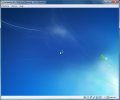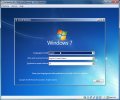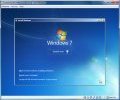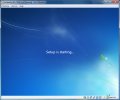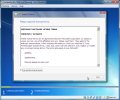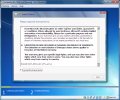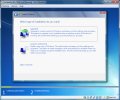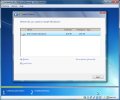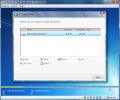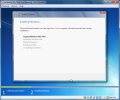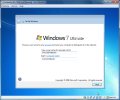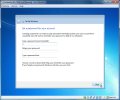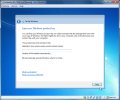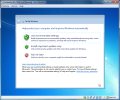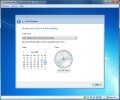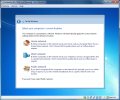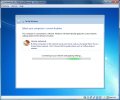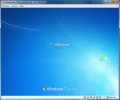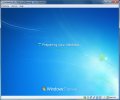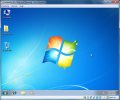At the start of this week, abundant speculation that Microsoft was going to release Windows 7 to manufacturing on the first day of the Worldwide Partner Conference 2009, New Orleans, July 13, 2009, was confirmed officially by Microsoft's Bill Veghte, senior vice president, Windows Business. At the same time, the Redmond company squashed the rumors on the official Windows team blog indicating Windows 7 had not been signed off, and that RTM would come in late July 2009. Subsequently, Veghte's words were altered in order to correct a transcription error, and to reveal that Windows 7 would be wrapped up by the end of this month, rather than on July 13th.
Further fueling rumors of the imminent Windows 7 RTM was Windows 7 Build 7600, leaked at the end of the past week and available for download in the wild. 6.1.7600.16384.win7_rtm.090710-1945, compiled on July 10th, 2009, was initially offered by torrent trackers and warez websites as a VHD image designed for use with a virtual machine. Still, following Microsoft denying that Windows 7 Build 7600.16384 was the gold release of the next iteration of the Windows client, the ISO of the 64-bit flavor of 7600.16384 also made its way out of Redmond.
No, 6.1.7600.16384.win7_rtm.090710-1945 is not Windows 7 RTM. Microsoft has, since the leak, produced an interim build of the operating system superseding 7600.16384. It is the case of 6.1.7600.16385.win7_rtm.090713-1255, which followed the same path as many of its precursors, leaked and up for grabs from illegal, third-party sources, but, this time around, with both the 32-bit and the 64-bit ISO images available.
Windows 7 Build 7600.16384 installation
Below, you will be able to find screenshots of the installation of Windows 7 Build 7600.16384. I turned to Virtual Box to get the job done, because of support for the 64-bit flavor of Windows 7. Microsoft still has a long way to go before Windows Virtual PC will catch up with Sun's client virtualization solution. Windows Virtual PC of course only offers support for 32-bit guest operating systems, and wasn't in any way capable of running x64 Windows 7 Build 7600.16384.
The deployment process itself brings nothing new to the table, compared with, let's say, Build 7264. There is no mention of the development stage in the End User License Agreement, an indication of RTM, and the milestone is referred to as Win7_RM.0_ULT_RTL_en-us at the end of the EULA.
Personally, I don't expect any more changes to the Windows 7 installer in the RTM version. Judging by the evolution of Windows 7 from Release Candidate, Microsoft is done with implementing changes to the deployment process. Users familiar with installing post-RC Windows 7 builds will undoubtedly run into the same experience with the gold version of the platform. And fact is that the wait is almost over. In less than two weeks, Microsoft will have released Windows 7 to manufacturing.
Windows 7 Build 7600.16384
Yes, I know that Windows 7 Build 7600.16385 is out there, but I need to focus on the 7600.16384 development milestone for the time being. Undeniably, Microsoft is extremely close to releasing Windows 7 to manufacturing. Illustrative proof of this is the jump in the build string to 7600, a round number, fitting perfectly with the Redmond company's “numeric” strategy for labeling gold releases of the Windows client. Chances are that Build 7600 will, indeed, be delivered as RTM, with modifications only affecting remaining parts of the build string. The evolution from 6.1.7600.16384.win7_rtm.090710-1945 to 6.1.7600.16385.win7_rtm.090713-1255 is an example as to what to expect from Microsoft in this respect.
The main question is of course: is there anything new? Well, there are bound to be under-the-hood changes, minor at best. Microsoft is softening all the rough edges of the operating system before releasing it to manufacturing. However, there's nothing reverberating to the surface of the OS, nothing visible. Be my guest and browse through the screenshots included within this article and, if you can spot new details, please leave a comment.
7600.16384 is labeled as only Windows 7 Build 7600 in winver. Users need to check the version of the default Internet Explorer 8 release in order to easily get another piece of the build string puzzle. But the version numbers for additional default components of the operating system such as Pain and WordPad will not feature the 16384, just the plain vanilla Windows 7 Build 7600.
And, of course, the most clear sign that RTM is close is the fact that Microsoft has discontinued the use of Beta and RC product keys to activate the latest milestones of Windows 7. Build 7600.16384, just as Build 7264, can no longer be activated with the keys publicly available from the Redmond company that allow testers to run the Release Candidate Build 7100 of the client until at least March 2010.
My advice is to stick with Windows 7 RC Build 7100, if you're looking to run the OS for all it's got. RC builds and activation product keys continue to be available from Microsoft, until next month, and, if you can survive the experience of Windows 7 shutting down every two hours, you can, of course, use the platform until June 2010, completely for free. By contrast, prolonging the trial period of Windows 7 RTM via slmgr will only give you 120 days of free usage. You can always cheat and run a more recent release of Windows 7, closer to RTM, Build 7260 is the last that can be activated with Beta and RC keys. There are additional ways to circumvent the activation process of Windows 7, but such bypasses are not the subject of this article.

 14 DAY TRIAL //
14 DAY TRIAL // 


